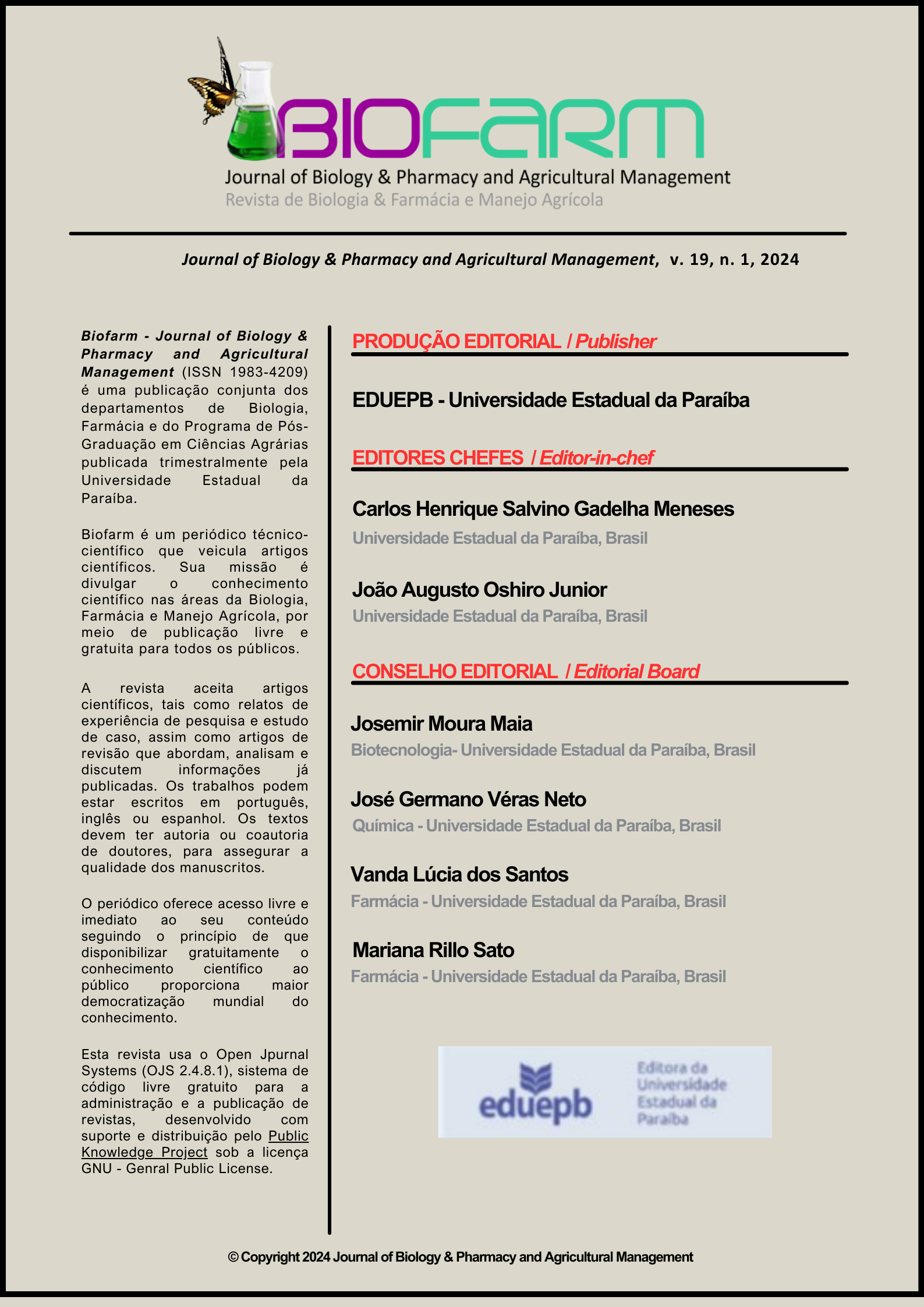Solubility study of the antimicrobial norfloxacin in different biorelevant media
Abstract
O norfloxacino (NFX) é uma fluoroquinolona de segunda geração amplamente utilizada como antibacteriano para tratar infecções do trato urinário. Este estudo investigou sua solubilidade em diferentes fluidos biorrelevantes, incluindo fluído gástrico simulado (FGS) pH 1,2, tampão acetato (TA) pH 4,5, fluído intestinal simulado (FIS) pH 6,8 e água ultrapura. A solubilidade do NFX mostrou-se pH-dependente, com aumento em pHs abaixo de 5, redução em pHs mais elevados. Em FGS a solubilidade foi de 12,23±1,18 mg/mL, em TA de 6,59±0,50 mg/mL, em FIS de 0,50±0,09 mg/mL e em água ultrapura de 0,32±0,06 mg/mL. Confirmou-se o padrão de solubilidade pH-dependente do fármaco, ressaltando a importância deste parâmetro na solubilidade do NFX. A disponibilidade na literatura de dados da solubilidade em meios biorrelevantes é importante para o desenvolvimento seguro de formulações farmacêuticas, especialmente para fármacos sensíveis às variações de pH em ambientes fisiológicos específicos.
Downloads
Published
How to Cite
Issue
Section
License
Copyright (c) 2024 BIOFARM - Journal of Biology & Pharmacy and Agricultural Management

This work is licensed under a Creative Commons Attribution 4.0 International License.
Authors and co-authors retain copyright, but cede the right to first publication to the Journal of Biology & Pharmacy and Agricultural Management (BIOFARM).
Copyright encompasses exclusive rights to reproduce and deliver the article in all form and media, including reprints, photographs, microfilms and any other similar reproductions, as well as translations. The reproduction of any part of this journal, its storage in databases and its transmission by any form or media - such as electronic, electrostatic and mechanical copies, photocopies, recordings, magnetic media, etc. - will be allowed only with a written permission from the BIOFARM.
Articles published in BIOFARM will be Open-Access articles distributed under the terms and conditions of the Creative Commons Attribution License (CC BY). The copyright is retained by the author(s). BIOFARM will insert the following note at the end of the published text:
© 2023 by the authors; licensee BIOFARM, Campina Grande, Brazil. This article is an open access article distributed under the terms and conditions of the Creative Commons Attribution License (http://creativecommons.org/licenses/by/4.0/).


